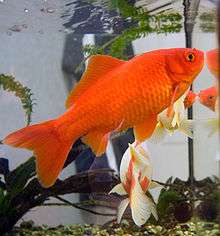Mai Pokhari
| Mai Pokhari | |
|---|---|
|
Mai Pokhari wetland | |
| Location | Ilam District, Nepal |
| Coordinates | 27°0′25″N 87°55′48″E / 27.00694°N 87.93000°ECoordinates: 27°0′25″N 87°55′48″E / 27.00694°N 87.93000°E |
| Area | 90 ha (220 acres) |
| Established | October 2008 |
| Official name | Mai Pokhari Ramsar Site |
| Designated | 28 October 2008 |
Mai Pokhari is a wetland in Ilam in the Ilam District of Nepal that was designated a Ramsar site on 28 October 2008.[1] It is a pilgrimage center for both Hindus and Buddhists. The lake within the wetland which reflects emerald waters has a circumference of about 1 kilometre (0.62 mi) and boats are operated. On the periphery of the lake there is the Maipokhari Botanical Garden of horticultural and ecological importance which houses a rock garden, an orchid house, plants collected from many regions of eastern Nepal, and a green house.[2][3]
Geography
The wetland is in the middle hill ranges of the Himalayas at an elevation of 2,150 metres (7,050 ft) (2,100 m (6,900 ft) and is also reported[3]) to cover an area of 90 ha (220 acres),[4] and is about 13 kilometres (8.1 mi) away to the north of Ilam Bazar.[3] The wetland has been created due to ground subsidence.[5] The source of water in the wetland is from natural springs and precipitation. It is the main source of fresh water for local people.[6]
Flora and fauna

The wetland's flora consists of habitat for eco-tone of Schima Castanopsis, Oak-Laurel and epiphytic orchids.[1] The wetland has species of water lilly, cone trees, rhododendrons, and herbal plants.[2]
The faunal species reported are white-rumped vulture, leopard cat (Prionailurus bengalensis), EurasianOtter (Lutra Lutra), and endemic Hariya Cheparo (Japalura variegata).[1] Aqua fuan consists of goldfish. There are also 300 species of birds recorded in the wetland.[2]
According to a research study report the wetlands's lentic environment of bottom-fauna is in its natural status with a stratification of abundant Chironomids.[4]
Threats
The threats faced by the wetland relate to introduced invasive species, occupation of forest area, haphazard construction activity, proliferation of human settlement on the tracks leading to the wetland.[6] Other threats identified are the use of pesticides in tea plantation in the watershed, and loss of habitat on account of growing crops such as cardamom, bouquet grass, and horticulture activities on the slopes of the wetland.[7] The wetland has invasive plant species of exotic Japanese pine (Cryptomeria japonica) in its catchment and the aqua fauna species of gold fish (Carassius auratus) which is reported to have affected the food chain, particularly for birds and amphibians.[1]
Conservation
In order to promote conservation awareness among the stake holders and the local people, measures undertaken have included establishing a Code of Conduct, monitoring of water quality and key species, and instituting a Management Plan on the basis of ecological and socio-cultural studies. "Apart from the local community agencies involved with this work are the Ilam District Forest Office, the Ilam District Development Committee, the Department of Forests, the Department of National Parks and Wildlife Conservation, local eco-clubs of local students, local conservation centers and specialists".[6] Under the Ramsar Small Grants Fund Portfolio 2014, a sustainable biodiversity conservation project has been initiated to highlight the wetlands and ecosystem, evolve a management plan, and better interaction with the Community Forest User Groups at site by way of organizing workshops, capacity building for management, create biodiversity portfolios, publication of posters and related literature to educate students and the visiting community.[8]
References
- 1 2 3 4 "Present status of Ramsar sites in Nepal" (pdf). International Jounal of Biodiversity and Conservation. Retrieved 10 November 2015.
- 1 2 3 Mayhew, Bradley; Brown, Lindsay; Holden, Trent (1 August 2012). Lonely Planet Nepal. Lonely Planet. p. 376. ISBN 978-1-74321-314-8.
- 1 2 3 "Maipokhari Botanical Garden, Ilam". Department of Plant Resources, Ministry of Forest Resources and Soil Conservation. Retrieved 10 November 2015.
- 1 2 "Comparative studies on lentic environment of Mai Pokhari, Ilam and Kechana jheel wetland ecosystems, Jhapa, Nepal (With reference to bottom dwelling fauna)". Nepalese Journal of Bio sciences. Retrieved 10 November 2015.
- ↑ Sharma, Chandra K. (1 June 1997). A treatise on water resources of Nepal. Sangeeta Sharma. p. 30.
- 1 2 3 "SGF news: Nepal's project for the Mai Pokhari Ramsar Site". Ramsar Organization. Retrieved 10 October 2015.
- ↑ Vijay Kumar Gupta; Anil K. Verma (1 January 2007). Perspectives in Animal Ecology and Reproduction. Daya Publishing House. pp. 206–. ISBN 978-81-7035-459-8.
- ↑ "Investing in Wetlands" (pdf). Ramsar Organization. p. 18 of 22. Retrieved 10 November 2015.
| Wikimedia Commons has media related to Mai Pokhari. |